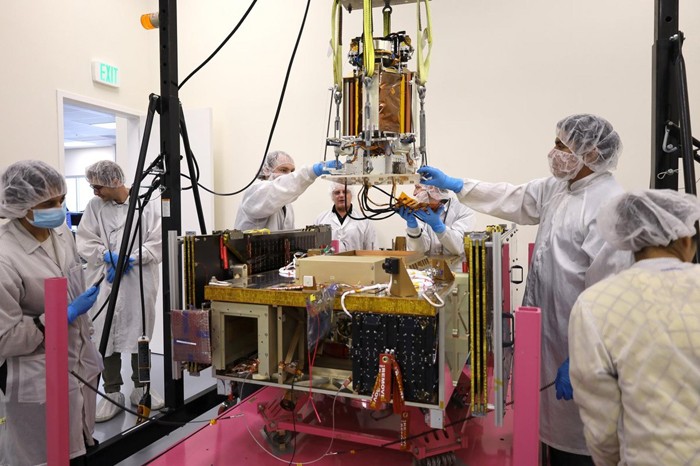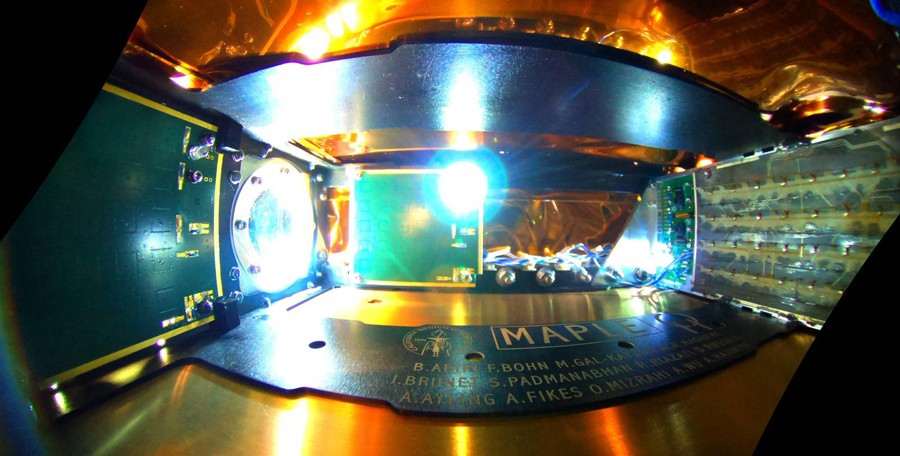Send this article to a friend:
June
06
2023
Send this article to a friend: June |
World-first space solar demonstration beams power from orbit to Earth
Space-based solar could solve a lot of Earth's clean energy problems; an orbital solar setup can harvest sunlight 24/7 – and the good stuff, too, unmolested by atmosphere or weather conditions. Theoretically, the solar potential in space is eight times better per square meter than a solar panel on Earth. Thus, several groups are attempting to get things started, despite some incredibly daunting challenges. One of which is the size of a useable array – as we pointed out just before this orbital prototype was launched, back in October last year. The eventual size of a commercially relevant space solar array might be around 3.5 square miles (9 sq km), with similarly massive receiver arrays down on Earth to capture the energy transmitted to the surface. How Does Wireless Power Transfer Work? This could require as many as 39 space launches, even with the clever, ultra-lightweight, self-deploying modular array the Caltech team is working on. This would feature a series of modules, each around a cubic meter (~35 cu ft) at launch, but capable of unfurling into huge flat squares, around 50 meters (164 ft) per side, with solar cells on one side and wireless power transmitters on the other. Of course, as we discussed when we wrote about this project last year, space launches are not cheap, and thus the economics look difficult as well, with a Levelized Cost of Energy (LCoE) predicted to be between US$1-2 per kWh –nearly six times the retail price of electricity in the USA. Nonetheless, the project is charging full steam ahead, buoyed by more than US$100 million's worth of donations from Irvine Company chairman Donald Bren. And it's now announced the results of its first phase orbital prototype testing.  Engineers loading the DULCE portion of the SSPD onto the Momentus Vigoride spacecraft prior to launch
Caltech
The 50-kg (110-lb) Space Solar Power Demonstrator (SSPD-1) was loaded into a Momentus Vigoride spacecraft and sent into a low orbit by a SpaceX rocket on January 3 this year. It was designed to test three systems: the DOLCE module was designed to test design and deployment mechanisms for the lightweight, foldable structures the SSPP team hopes to use in a larger array. It's yet to begin unfolding. The ALBA module was there to test a number of different solar cell designs to see which would be most effective in space, and these tests are ongoing. And the MAPLE (Microwave Array for Power-transfer Low-orbit Experiment) module was designed purely for early-stage verification of the wireless power beaming technology that would take solar energy and send it back to Earth, aimed precisely at receiver stations on the surface without any moving parts at the transmitter. Part of this MAPLE test sequence involved a short-range power-beaming demonstration in which a transmitter array sent power to two different receiver arrays, only about a foot (~30cm) away from the transmitters. This was a chance to validate the team's beam-steering technology – which uses nothing but phase manipulation and constructive/destructive interference between waves to precisely direct the beams – in the harsh temperatures and radiation environment of space. And sure enough, the team was able to light up little LEDs on each receiver at will.  LEDs in the MAPLE module light up to confirm wireless power transmission across a short distance
Caltech
"To the best of our knowledge, no one has ever demonstrated wireless energy transfer in space even with expensive rigid structures," said Ali Hajimiri, Bren Professor of Electrical Engineering and Medical Engineering and co-director of the SSPP team. "We are doing it with flexible lightweight structures and with our own integrated circuits. This is a first." The MAPLE unit also has a small window through which the transmitter array was able to beam energy directly down to Earth, aimed at a receiver unit on the roof of an engineering lab at Caltech Pasadena. And again, this experiment was successful; the power beam was detected at the ground station, at the expected time and frequency, and with the correct frequency shift predicted based on the distance traveled. This wasn't a useful amount of power, but it validates the team's ability to precisely target a power beam over great distances, and confirms that the gear involved can survive the trip to orbit. Space Solar Power Demonstrator "The flexible power transmission arrays are essential to the current design of Caltech's vision for a constellation of sail-like solar panels that unfurl once they reach orbit," said Sergio Pellegrino, Joyce and Kent Kresa Professor of Aerospace and Civil Engineering and co-director of SSPP. "In the same way that the internet democratized access to information, we hope that wireless energy transfer democratizes access to energy," Hajimiri continued. "No energy transmission infrastructure will be needed on the ground to receive this power. That means we can send energy to remote regions and areas devastated by war or natural disaster." So the technology for a space-based solar array is absolutely coming along nicely. As stated earlier, the economics of such a project in a commercial setting don't exactly look rosy, but who knows what kind of tricks a good business head might be able to use to turn those tables. Certainly a fascinating project to keep tabs on.
|
Send this article to a friend:
 |
 |
 |